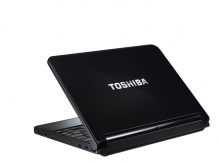'ZDNET Recommends': What exactly does it mean?
ZDNET's recommendations are based on many hours of testing, research, and comparison shopping. We gather data from the best available sources, including vendor and retailer listings as well as other relevant and independent reviews sites. And we pore over customer reviews to find out what matters to real people who already own and use the products and services we’re assessing.
When you click through from our site to a retailer and buy a product or service, we may earn affiliate commissions. This helps support our work, but does not affect what we cover or how, and it does not affect the price you pay. Neither ZDNET nor the author are compensated for these independent reviews. Indeed, we follow strict guidelines that ensure our editorial content is never influenced by advertisers.
ZDNET's editorial team writes on behalf of you, our reader. Our goal is to deliver the most accurate information and the most knowledgeable advice possible in order to help you make smarter buying decisions on tech gear and a wide array of products and services. Our editors thoroughly review and fact-check every article to ensure that our content meets the highest standards. If we have made an error or published misleading information, we will correct or clarify the article. If you see inaccuracies in our content, please report the mistake via this form.
Toshiba R10 Tablet


Toshiba R10 Tablet
pros and cons
Like the rest of Toshiba's Tablet PC designs, the R10 is a convertible tablet, which means that in its standard form it's virtually indistinguishable from a regular notebook, unless you happen to notice the socket in the side where the stylus is located. With a quick flick of the wrist the screen twists and flips into a full slate configuration, leaving users in a fully pen-based environment. In its laptop configuration it's remarkably like the rest of Toshiba's range, with a nice responsive keyboard, a glide pad and two mouse buttons at the base. The R10 we reviewed is laid out in such a way that it practically screams laptop, as it sports a silver casing on top of a black base - but there's nothing particularly wrong with going with the crowd in this case. It measures in at 328x289.7x38.4mm, and weighs 2.8kg, so it's certainly a notebook you'll feel after only a short period of carrying it.
As a tablet, the other important design aspect of the R10 is the stylus, which can be found in a socket on the right hand side of the tablet. Using the same technology that's behind Wacom's Graphire writing tablets, the pen needs no power source and is remarkably accurate at picking up user pen strokes - although whether users are any good with tablets is another matter that we'll touch on shortly.
From a notebook perspective, the R10 comes with most of the bells and whistles you'd want in a mid to upper range system. That includes an Intel Pentium M 735 Processor 1.7GHz, 512MB of RAM, 60GB of hard drive space, a DVD SuperMulti drive that'll handle every writeable DVD format including DVD+R DL and DVD-RAM and a 14.1" T-XGA 1024 x 768 display with the aforementioned digitiser behind it. That's not a bad combination for the asking price, although it's not entirely stellar either. From a tablet perspective, however, it's a real shot in the arm, as up until now most manufacturers have chased corporate markets interested in running dedicated applications on Tablets, rather than selling direct to consumers.
The other feature that Toshiba's keen to promote with the R10 is the inbuilt shock protection that Toshiba refers to as -three dimensional shock protection". Presumably getting that pesky time dimension under control was too much for their engineers, but regardless, what this does is safely park the hard drive heads if it realises that it's being dropped, shaken or otherwise treated badly, saving your data in the process.
From the Tablet side, you get the Windows XP Tablet PC Edition 2005 operating system, along with a copy of Microsoft's OneNote application. OneNote's best described as a mutant child of Word and Notepad, allowing users to quickly switch between typed and written text, as well as cutting and pasting from other documents via the Pen-based interface. There's also a small offering of Toshiba-related applications on offer, as well as a trial version of Norton AntiVirus 2005.
We tried exceptionally hard to get the R10 to work happily with Bapco's MobileMark 2002, but it wasn't having any of it, despite multiple installations, patches and even complete system restores. For what it's worth, having gone through the experience we will say that the R10 does restore very simply and quickly. Without hard benchmark figures to go on, however, it's a bit hard to fairly and effectively evaluate the R10 against its immediate competition. Toshiba rates battery life for the R10 at up to four hours, although if you're using the inbuilt wireless connectivity you can expect that to drop significantly. On the subject of wireless connectivity, this was the one area where the R10 stood out, and not for the right reasons. Within our test environment the R10 often struggled to maintain a speedy connection compared to several other notebooks including other Centrino models.
The real hook for the R10 has to be whether or not the whole Tablet concept grabs you innately. The supplied OneNote and Journal software works well, but it's hardly a case for spending the additional money on this particular tablet. Beyond that, we can see a clear argument for professional artists and the like using the tablet as a hyped up graphics panel with applications such as Photoshop. Likewise, there's a clear market for those with physical disabilities using a pen-based interface to meet their computing needs, and the R10 is a good fit for that, especially given its more consumer-friendly pricing.
New Tablet users, especially if you've never used a graphics tablet will probably find the experience of using a plastic pen on a plastic screen to be quite an unusual one, but once the newness has worn off you'll realise that the hype about "writing" with it is just hype, as it's nothing like writing on paper at all. A little patience will improve your methodology, but it's still an approximation at best. Likewise, the much vaunted handwriting recognition technology may be amazing conceptually, but in our real world testing we've always been able to find more than a few people able to confuse the software beyond help with just a few errant pen strokes.
Top ZDNET Reviews
Toshiba R10 Tablet
Company: Toshiba PC
Price: AU$3499
Phone: 13 30 70